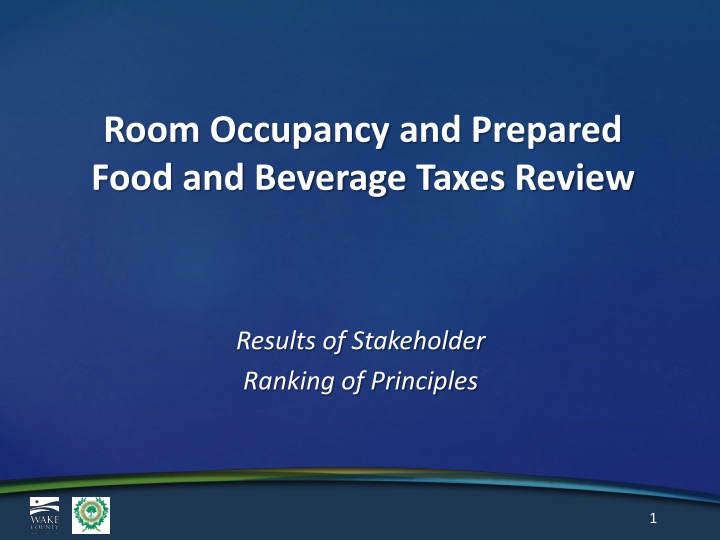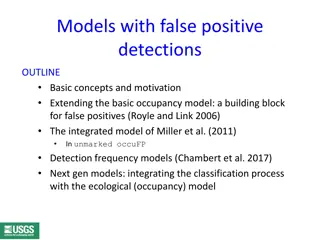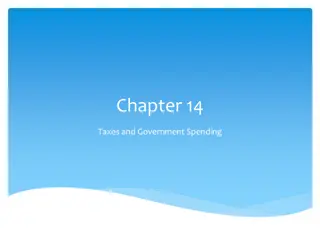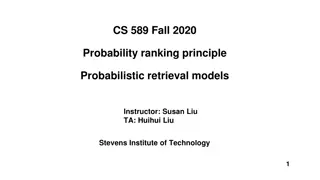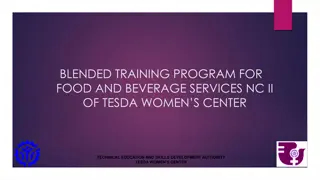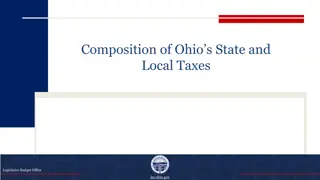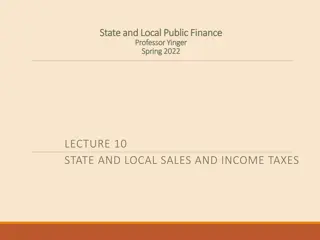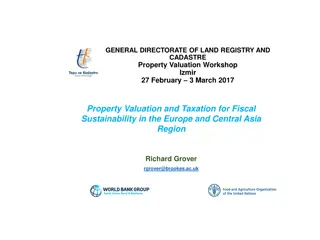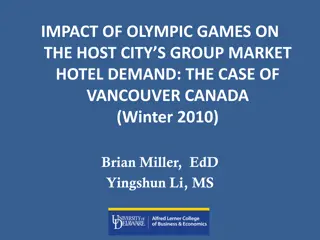Stakeholder Ranking of Room Occupancy and Food & Beverage Taxes Principles
The March 9, 2017 stakeholders meeting identified 12 Guiding Principles for the use of room occupancy and food & beverage taxes. Attendees ranked these principles based on importance, highlighting the need for a balanced approach to funding decisions that consider diverse perspectives and community needs. The results showed varied rankings across different constituency groups, emphasizing the importance of understanding and reflecting the priorities of all stakeholders to achieve effective outcomes.
Download Presentation

Please find below an Image/Link to download the presentation.
The content on the website is provided AS IS for your information and personal use only. It may not be sold, licensed, or shared on other websites without obtaining consent from the author.If you encounter any issues during the download, it is possible that the publisher has removed the file from their server.
You are allowed to download the files provided on this website for personal or commercial use, subject to the condition that they are used lawfully. All files are the property of their respective owners.
The content on the website is provided AS IS for your information and personal use only. It may not be sold, licensed, or shared on other websites without obtaining consent from the author.
E N D
Presentation Transcript
Room Occupancy and Prepared Food and Beverage Taxes Review Results of Stakeholder Ranking of Principles 1
Ranking of Principles The March 9, 2017 stakeholders meeting identified 12 Guiding Principles for Use of Room Occupancy and Food and Beverage Taxes Attendees were asked to rank the 12 Principles based on the importance of the Principle to them 1 for Principle most important to you 12 for Principle least important to you Attendees were asked to select a constituency group they represented for purposes of ranking The results of the exercise are included in Table 1 and Table 2 below.
Table 1 Notes: Lists all 12 Principles in the order presented to the stakeholders (A through L.) Each individual set of rankings was assigned to the self- identified constituency group. An average score was developed for each constituency group based on the number of respondents per group. A total of 47 responses were tallied and categorized into nine constituency groups. The Arts/Culture and GRCVB/Hospitality groups were combined for scoring purposes.
Results of Ranking by Attendee Category Table 1: *highlighted cells represent avg scores of lower than 6
Table 1 Summary: Findings: 11 of the 12 Principles received overall high rankings (top half) by at least one constituency group No Principle received a high ranking by all constituency groups Many Principles averaged mid-range scores indicating moderate levels of importance or varying levels of importance that moderated the average. Takeaways: Establishing Practices that consider all Principles is important to best reflect the varying perspectives of the constituency groups and needs of the community Funding decisions will likely have impacts that delight or disappoint various constituency groups
Table 2 Notes: Lists all 12 Principles in the order of the Total Average The Total Average was calculated by adding the average scores of each constituency group and dividing by the total number of groups (9).
Results of Ranking Total Avg Table 2: Total Avg Prioritize use of funds for projects that drive measurable, regular overnight visitation or positive return on investment (ROI) Support and promote the on-going capital expenditure program and expansion of existing investments in major facilities to keep them current, relevant and competitive in market A Comply with all requirements of the existing enabling legislation Ensure project investments are secured by solid long-term plans, both operational and financial, that demonstrate viability and sustainability Utilize high standards of fiscal accountability in planning and managing the use of tax revenues: - Fulfill existing obligations before entering into significant new financial commitments - Maintain long-term, conservative financial forecasting Support investments that complement economic development efforts and enhance quality of life experiences for visitors, newcomers and long-time residents Create sports, arts and cultural opportunities, through leveraging community investments and partnerships, that benefit residents and enhance tourism offerings Support a project investment mix that considers location and types of uses (sports, cultural, arts, convention, etc.) K Engage stakeholders representing varying entities, jurisdictions and uses Ensure that investments support the long-term vision of Wake County and its cities and towns as a tourism destination F Provide a regular funding source for eligible projects that require a smaller scale investment L Support investments that consider emerging arts, sports and cultural experiences and unmet needs C 4.3 B 4.4 4.5 E 5.4 D 6.0 I 6.4 G 6.5 H 6.8 7.0 J 7.5 7.6 9.9 *Total Avg = Sum of average score for each category divided by nine.
Table 2 Summary: Findings: The three top scored Principles received average scores within 1/10th of each other The range of average scores was just 5.6 points between most important and least important Takeaways: Average scores affirm importance of all Principles Top ranking Principles highlight importance of maximizing return on investment, ensuring ongoing competitiveness of major investments and affirm enabling legislation
